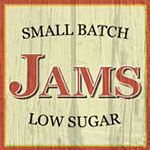A New Architecture for the California Food System
by Jim CochranFirst presented January 2005
The following is a summary of an idea that came to me during a ROC Council meeting in the summer of 2004. I have floated the idea as a trial balloon a few times since then, and met with generally favorable--if incredulous--response. I elaborate it here in order to formally include it in the Vivid Picture process, and to share it with the ROC Council and several members of the Business Advisory Group. Please feel free to poke holes in it, or to add to it, and we’ll see whether it stays afloat or sputters around and plops its slobbery self on the floor.
Introduction
I use the architecture metaphor because I think it describes the process we are going through. The Vivid Picture group is meeting with its client—the people of California—a large and growing family that finds itself trying to navigate a home which has been added to haphazardly and cobbled together with Khafka-esque corridors. Light and air no longer enter all the rooms; the landscaping has been variously built upon or trampled. Much of the family finds itself camping on the lawn, getting its food from the cans and packages it can find in the garage.
How to start? Tear down the whole house? No--many of the older parts (and some of the newer parts) are really quite beautiful and functional. This is a remodel job, an architect’s nightmare—or dream. It tackles one wing of the current structure, and does a complete makeover, bringing into the fold many of the campers on the lawn.
But how to create a flexible, flowing structure that can grow gracefully as the family grows? That brings people and nature together in common areas to share food and friendship? That creates a sense that everyone at the table got a fair deal for their part in making the meal possible? That creates the space for a stillness of mind?
Perhaps the architect’s role here is to create a modular, ‘open’ architecture that can take various but coherently organized shapes. It will require that the family members begin to talk to one another, to listen and to compromise, as they create their own spaces. It will be a process as much as a piece of engineering. It will really be more than a ‘food system’ because it will involve health, housing, education, transportation, and everything that goes into creating communities that sit gracefully on the earth. It will be based on a new market system that compensates labor and small business people more equitably.
The new system would overlay and complement existing small and medium-sized actors in the sustainable food system, who need to be reassured that the ‘new architecture’ is meant to include many independents who will interact with the new infrastructure to the degree that they find helpful. If it is successful, the new infrastructure might come to represent 20% of the California food system. When taken together with independent small and mid-sized producers and retailers, it might represent 50% of the system. The remainder of the system would presumably remain in the hands of very large producers and retailers.
The actual form a new system might take will evolve organically, and its evolution will involve many people from all walks of life. The process will be guided by the principles which will be emerging in the Vivid Picture over the coming months. The ideas set forth here are just a starting point.
A New Retail Paradigm
Being a farmer, I naturally start at the part of the process that I know best. We small and mid-sized farmers, ranchers, fishers, and other food producers currently have a limited number of outlets where we can sell our products and be paid a ‘sustainable’ price. While Whole Foods, small independent markets, farmers’ markets, and Community-Supported Agriculture programs can absorb some of our production, there is a ‘glass ceiling’ which prevents our products from reaching the average California consumer.
If we are to substantially increase the availability of high-quality, locally produced food, we will need a new network of retailers and food service outlets which source from a broad array of small and mid-sized producers in an efficient manner. The retailers would serve the lower and middle strata of the population who currently do not have access to high-quality food. They would support a greatly expanded network of small producers, who can generally produce a higher-quality product than industrial-scale farms.
The network of new retail outlets could either be built from scratch or purchased and converted to an entirely different business model, with a different ownership and organizational structure. For example, purchasing a supermarket chain such as Safeway and changing its buying practices would provide a massive new outlet for thousands of small producers. A new store format would feature local farms and producers, but still offer a range of familiar products. Since local producers would participate in ownership of the stores, they would have an incentive to contribute to the ‘personality’ of the store. Each store’s new local character could form the nucleus of a new local food community. The stores’ deli’s could produce school lunches using high-quality food; schools could be tied directly into their local stores and farms.
Food processing plants would be purchased and re-scaled to produce smaller quantities of high-quality products to feed into the system. Farmland would be purchased for lease to new small farmers; new housing and health clinics would be built for participants in the system.
Participating restaurants and food service providers could tie their offerings and their ambiance to locally produced food. Such a community organized around food could have a celebratory and affirmative character which could become a bridge between otherwise separate sub-cultures and political divisions.
A New Architecture: Regional “Service Centers”
The new infrastructure would be based around new--locally controlled--regional warehousing and distribution centers where food products would be assembled and delivered to individual retailers. Food processing plants would be purchased and re-scaled to produce smaller quantities of high-quality products to feed into the system.
The distribution centers would primarily serve the network of new community-based retailers serving lower and middle-income California residents. It would also serve high-end retailers such as Whole Foods by giving them access to small producers through regional centers, without having to deal with hundreds of small producers individually.
These regional warehouse and distribution centers would support a new network of small and mid-sized farmers, food processors, bakeries, dairies, fishers, and slaughterhouses, which would fill the shelves, dairy cases, and meat and fish counters of hundreds of new retail outlets.
The centers would be more than a logistics forum---they would become “Service Centers” that would provide marketing, capital investment, banking, insurance, and other business and community services to the food delivery community. They could facilitate the entry of new farmers, ranchers, and so forth, into the food system by providing access to land and capital, as well as a guaranteed market for their products. They could act as business incubators, offering technical assistance to entrepreneurs who lack one or more of the many skill-sets necessary to succeed.
A comprehensive training program for produce workers and other workers who are the direct link to the consuming public would elevate their status from ‘shelf-stockers’ to public health workers. Farm workers and other workers throughout the entire food system would participate in training programs and would find career ladders open to them.
The Centers would provide housing and home ownership opportunities to participants in the system. A career in the food system would become a viable alternative for aspirants to the California dream.
Labor standards at all levels of the network would be high enough to support healthy families and strong communities. This would mean a substantial improvement for many farm and food production workers. Service Centers, either working alone or--as appropriate--working with unions, could offer sophisticated human relations services, health benefits, training and other services normally available only to large corporations. The Centers would provide some sort of labor standards certification program in partnership with labor unions.
The higher costs of higher labor standards would be offset by higher prices paid to producers, which would be possible to pay because the completely integrated system would not have to pay out profits to shareholders at every level of exchange. By being part of a vertically integrated network that was not beholden to distant shareholders, the new system could offer reasonable prices to low and moderate income customers, and still return a fair price to producers who would, in turn, be able to better compensate their employees. Moreover, the new system would be based on a system of exchange that better recognized the true social and environmental cost of doing business. As the system grew in size, it would begin to reduce the hidden costs of the current food system: reducing the fiscal burden on taxpayers who currently subsidize medical, housing, and educational services for these workers.
The Service Centers would be locally owned and managed, thereby eliminating several layers of management which are the norm in the industrial food system model. This would not only reduce some of the costs, but would have the social benefit of offering local higher-level jobs. Local communities would be able to offer clusters of talented people meaningful careers and entrepreneurial opportunities. The aggregation of brain-power and creative energy would no longer occur only in urban and semi-urban areas; the ‘brain-drain’ would be reversed. Moreover, the talent wanting to get into the food system would find that the real opportunities existed in the communities to be served. Small teams of highly motivated, intelligent people could work together on local segments of the big picture.
Creating the New Infrastructure
Working for an organization or business that has a social and/or environmental mission holds great appeal to talented, idealistic people. While the non-profit world has assembled hundreds of teams who have had great success on numerous projects which serve high goals, the business community has had limited success in offering career opportunities for those who are mission-focused. It is time to bring these two worlds together in a new type of enterprise which has a different balance of social good and profitability.
The new architecture should create a wide variety of opportunities for new stakeholders to earn a livelihood as part of an alternative business whose ideals they can believe in. The Service Centers could form a locus for this talent; these teams would be creating a better food system rather than advocating for it. A new combination of idealistic and business people would be the first step. This will require those in the non-profit community to abandon their disdain for the for-profit world, and to work together to build a new type of commercial enterprise.
The Vivid Picture Project is the first step in visioning the new food system. The next step is to finance the preparation of a series of business plans to spawn new businesses that would bring this new food system to life.
“New Blood” for the Food System
Opening up the architecture of the food industry will bring in new talent whose innovations will contribute to a more efficient system that would be competitive with the ‘box stores.’ These teams of “idealistic entrepreneurs” can work out new systems of communication, exchange, and community which will invigorate small businesses.
The new clusters of enthusiasm and brain power would have their work cut out for them. The new system would be very complex and dynamic, a challenge for the best and the brightest. It would require agile minds with good communication skills and a broad range of technical and business skills. They would add new life to an industry that has largely ignored progressive business models that have been proven successful in other industries.
If some of the innovations of the mega-corporations are brought to an alternative system, a new food system will have the potential to match their efficiency. But the approach must be system-wide rather than piece-meal because even very innovative businesses – acting within the predominant paradigm – cannot solve large problems alone. Whole Foods, for example, can not afford to source from thousands of small businesses unless they are organized into a coherent marketplace in a way that meets their purchasing needs.
Production could be coordinated to meet the needs of customers without creating the unmanageable surpluses which contribute to waste in the current system. Hand-held computers could link everyone from harvest crews in the fields, production crews in processing facilities, to check-out counters at the retail level. Regional Service Centers could exchange their surplus products among themselves to maintain a stable pricing structure and to offer a full range of products to their customers.
The pricing system would be based on direct real-time negotiations between the parties so that prices could be adjusted instantly throughout the system. Inventory management and pricing would be transparent so that all interested parties would be able to make appropriate responses. Producers would not be left in the dark about what happens to their product after it leaves the farm, and retailers would have a real-time picture of exactly what product is available for them to draw from. A transparent system will contribute to efficiency and thereby to lower costs.
If the system is sufficiently large and sophisticated, it may be possible to offer much higher quality food at prices that are not much higher than they are at existing chain markets. If some prices were higher, it would be because the food was worth more to the customers: it tasted better and the shopping experience was more fulfilling. Offering customers a more fulfilling shopping or dining experience would provide them with an alternative ‘entertainment’ option, reducing their need to spend money on video rentals, alcohol, or shopping at the mall. They would choose to spend more time interacting with the food system and enjoying food with their friends and family.
Financing the System
Operating capital for the system would come in substantial part from the local communities. Capital investment would come from outside sources, but would be structured so that ownership and control of the food system network would be broadly dispersed, including communities of customers, producers, processors, local retail and food service entities, health and education entities, and workers at all levels.
Equity capital could be raised by a direct public offering of shares in the ownership of the system. The offerings might be regionalized to assure local control, and the market for the shares might be restricted by various covenants which assure broad distribution of ownership. The stock issued by the new entities would be constrained by current law requiring the primacy of profitability and highest financial value over various other measures of value that take into account broader social and environmental values. This new balance of socials needs and profitability would require new securities law, which in turn would require the creation of a new marketplace for ownership with a different set of metrics.
Debt capital could be raised by creating new local banking units which would offer local customers a place to deposit their money and earn modest interest on their ‘loans’ to their local food system. A new credit card system would tie to regional units and would streamline transactions between local participants. Food subsidies could be administered through the system, giving recipients better access to higher quality, locally produced food.
The aggregate of the banking units could offer insurance services to customers, workers, and to the producing units. The substantial reserves which would be generated by these services could also be invested in the system. The risk involved by concentrating invested insurance reserves in one related business could be offset by government guarantees.
Capital investments could be financed by selling Preferred Stock to government entities, as well as to pension funds and investment funds, which would receive special tax benefits to offset a lower return on their investment. Entrepreneurs who were able to finance only a part of their enterprise could share ownership with the larger entity. Some existing small farms and businesses could help finance the system because it would provide a new market for their products.
The new food system could be organized as a cooperative, a non-profit service company, or as some other business model.
An Employee Stock Ownership Program could provide an entry-exit mechanism for all participants, ensuring continuous opportunities for generations of young entrepreneurs and workers, as well as a means for the retiring generation to remove their equity in an orderly manner. It could also be a mechanism for transferring equity from retiring independent farmers to new farmers.
Creating a Broad Constituency to Impact Policy
Rather than competing with small players, the new system is presented as an alternative to the few mega-corporations which currently control the food system, and thereby control policy-makers who grease the way for their increasing control of resources and markets. If the new architecture includes public health and housing constituencies—which it necessarily must if it is to be truly comprehensive—it will come to have enough political power to move policy in a more effective manner. It will derive its power from the strength of the multitude of its communities, rather than from a few people with exclusive access to large amounts of capital. But the communities will need to see themselves not as single-issue advocacy groups, but rather as problem-solving groups which cross traditional political, economic, and ethnic boundaries.
The re-orientation of these communities toward a common goal will require a great deal of work. Unions, small business groups, and environmental groups--often not accustomed to working together--will need to be brought together in a new network of advocacy. The ROC Council could play a key role in supporting this work by financing forums both at the community level and at the state level.
Drawing on the Wisdom of the Past to Create a New Future
Thirty years ago, the skills necessary to create a new food system did not exist within the ‘sustainable food’ community. But today there are many ‘veterans’ of the organic and ‘sustainable’ food world who know how to build all the individual parts of a fully integrated system. They can act as mentors to a new generation of people looking for a meaningful career-level position in the food system.
We can make it happen by beginning work on the architectural drawings for this new enterprise. A group of sustainable food industry ‘mentors’ can work in parallel on the engineering plans which will underlie the architecture. Continuous feedback from the ‘engineers’ and a wide array of organized groups—community-based groups, industry groups, organized labor, policy groups, and the social investing community--will result in an ‘open’ architecture’ which will meet the needs of all participants. The final plan will be vetted by the various groups, which can begin to coordinate their efforts on local networking projects, while another group begins implementation of the larger plan.
History teaches us that today’s economic realities will not be tomorrow’s, and that opportunities present themselves to those who are prepared. A $25 billion plan might not be so far-fetched if there were ever a major economic dislocation--caused by a precipitous drop in the dollar, an unraveling of the derivative markets, an intractable credit crunch, or some unforseen series of economic events--which cause major segments of the food system to seize up.
Every day, small groups of people draw up multi-billion dollar plans for the continuation and expansion of the global industrial food system. We do not need to cede that privilege to them, and we can not continue complaining unless we are willing to step forward with our own alternative plan. We can do it. We are just as smart as they are.










